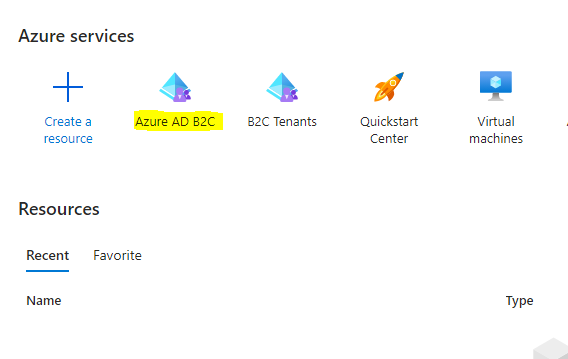What are the Identity Providers in Azure Ad B2C?
Hello Readers,
Welcome to my 3rd blog on "Azure AD B2C" series. In the first 2 parts we have seen how to create Azure AD B2C Tenant step by step and how to use it with .net core application. If you haven't checked it yet then you can check Part-1 - Part-2. So, Today we will look into the "Identity Providers" that azure ad b2c provides.
In today's digital world, online security is more important than ever. As more and more applications are moving to the cloud, businesses need to ensure their users' identities are verified and protected. This is where identity providers (IDPs) come in.
An identity provider is a service that verifies the identity of a user, and then provides that user with a secure way to access an application or service. In Azure AD B2C, there are several different types of identity providers available to help you achieve this.
What is Azure AD B2C?
Before we dive into identity providers in Azure AD B2C, let's first briefly discuss what Azure AD B2C is. Azure Active Directory (AD) B2C is a cloud-based identity and access management service that provides a set of authentication, authorization, and user management capabilities to web and mobile applications.
Azure AD B2C is designed to work with external user directories, such as social identity providers like Facebook, Google, and Twitter, as well as enterprise identity providers like Active Directory and LDAP (LightWeight Directory Access Protocol). By integrating with these external identity providers, Azure AD B2C allows you to provide your users with a seamless and secure way to access your applications.
Types of Identity Providers in Azure AD B2C
Azure AD B2C provides several identity providers that can be used to authenticate and authorize users. Let's take a closer look at each of them.
Local Accounts
Local accounts are user accounts that are stored in the Azure AD B2C directory. These accounts are created and managed directly by your application, and can be used to authenticate users without the need for an external identity provider. This is useful for applications that do not have a pre-existing user base or for scenarios where you want to keep user data within your own directory.
Social Identity Providers
Social identity providers allow users to sign in to your application using their existing social media accounts, such as Facebook, Google, and Twitter. These identity providers make it easy for users to sign in without the need to create a new account, and they also provide a high level of security since the user's identity is verified by the social media provider.
Enterprise Identity Providers
Enterprise identity providers allow users to sign in to your application using their existing corporate credentials. These identity providers include Active Directory, LDAP, and other directory services. By using enterprise identity providers, you can leverage your existing directory infrastructure to provide your users with a seamless and secure way to access your applications.
Custom Identity Providers
Azure AD B2C also provides the ability to integrate with custom identity providers. This can be useful if you have a specific authentication mechanism that you need to use, or if you want to build your own identity provider that integrates with Azure AD B2C.
We can see the Identity Providers listed in the azure ad b2c in the given images.
Configuring Identity Providers in Azure AD B2C
Configuring identity providers in Azure AD B2C is a simple process that can be done using the Azure portal. Once you have created an Azure AD B2C tenant, you can add identity providers by following these steps:
1. Sign in to the Azure portal and navigate to your Azure AD B2C tenant.
2. Click on "Identity providers" in the left-hand navigation menu.
3. Click on "Add" to add a new identity provider.
4. Choose the type of identity provider you want to add (local, social, enterprise, or custom).
5. Follow the on-screen instructions to configure the identity provider.
6. Save your changes and test the identity provider to ensure it is working as expected.
Identity providers are a critical component of any modern application that requires secure user authentication and authorization. In Azure AD B2C, there are several different types of identity providers available, including local accounts, social identity providers, enterprise identity providers, and custom.
This steps gives idea that how simple it is to integrate Identity Providers in azure b2c. In my next blog I will explain how to integrate Gmail Identity Provider in our .net core application.
I hope you guys have enjoyed this session of Identity Providers. Would love to hear from you guys: Please provide your valuable feedback in comment section.
See you in next blog 😀.





Comments
Post a Comment